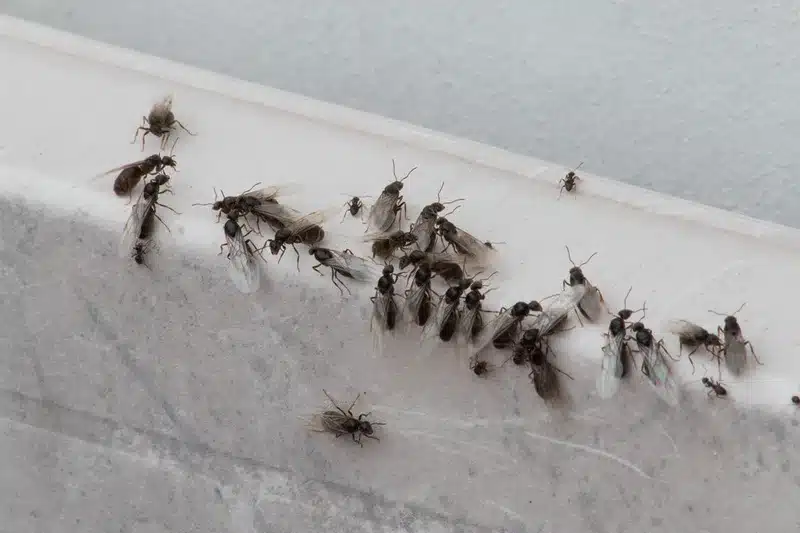Seeing black ants with wings suddenly appear in your home can be startling. These winged ants, called alates, emerge during nuptial flights when mature colonies release reproductive ants to start new nests. Many homeowners first spot these swarms near windows, especially during spring and early summer.
In my experience helping customers across the DC Metro area, black ants with wings often signal a more serious problem. When homeowners call after discovering a sudden indoor swarm, it usually means there’s already a mature colony somewhere within or near the structure. Catching this early makes all the difference in preventing long-term damage.
Why Black Ants With Wings Suddenly Appear Indoors
Black ants with wings don’t just show up randomly. They emerge during specific weather conditions that trigger nuptial flights. These swarms typically happen on warm, humid afternoons after rainfall when conditions are perfect for mating and establishing new colonies.
Several factors attract these winged ants to your home. Moisture problems create ideal nesting conditions, especially around leaky pipes or areas with poor ventilation. Food sources in kitchens and pantries also draw them indoors. Additionally, decaying wood from previous water damage provides perfect excavation sites for certain species.
The timing isn’t coincidental either. Most black ants with wings appear between April and July in the Virginia, Maryland, and DC region. This seasonal pattern helps distinguish them from other pests and indicates when you should be most vigilant about prevention.
Identifying Black Ants With Wings vs Termites
Many homeowners confuse black ants with wings for termite swarmers, but key differences help you tell them apart. Ants have elbowed antennae, while termites have straight, beaded antennae. Ants also have pinched waists, whereas termites have thick, straight bodies.
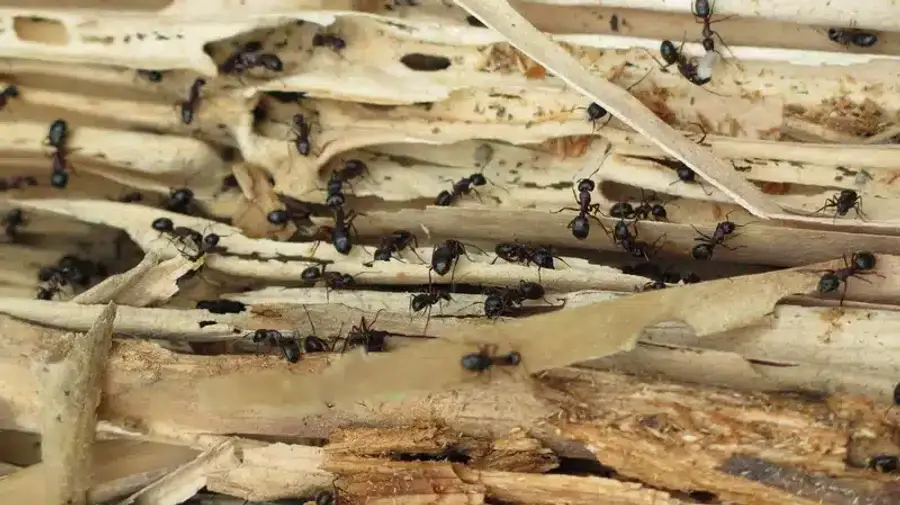
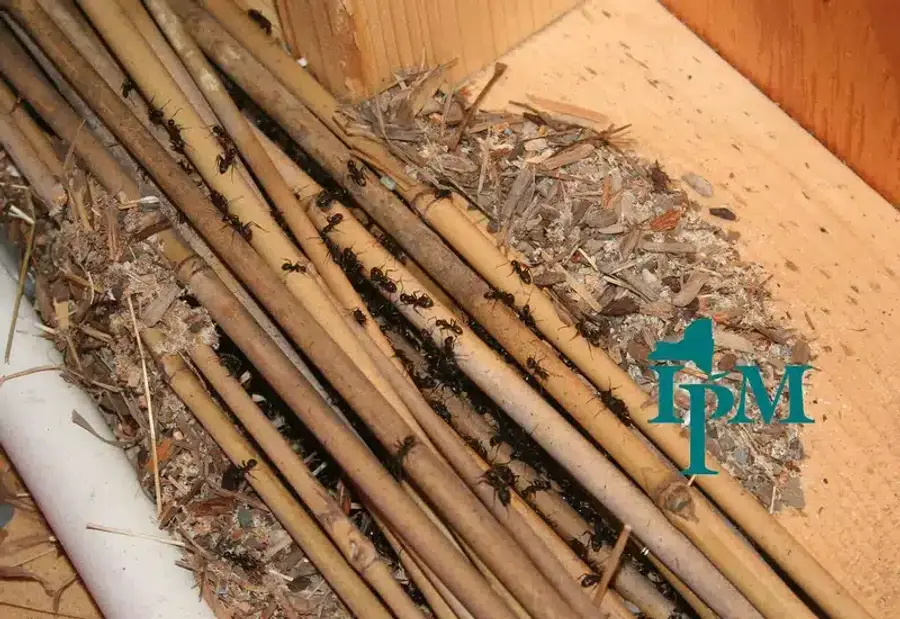
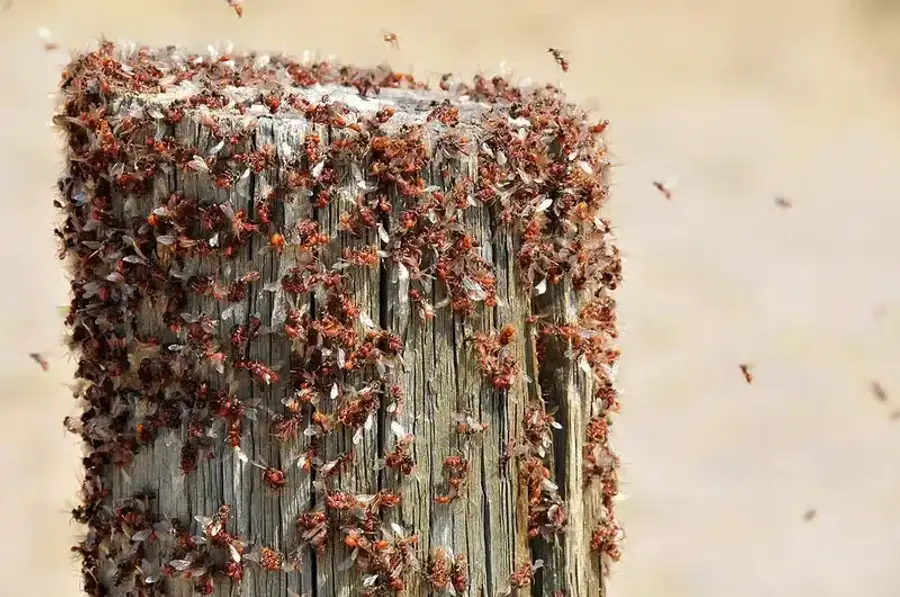

Wing length provides another clear distinction. Flying ants have unequal wing pairs - the front wings are longer than the back wings. Termites have four equal-length wings that extend well beyond their body.
The behavior differs too. Black ants with wings typically swarm during daylight hours and are attracted to light sources. Termite swarmers often emerge in the evening and may be found around outdoor lights. For a detailed comparison with photos, check out our guide on termites vs flying ants differences.
Key Mid-Atlantic Winged Carpenter Ants and Other Flying Pest Species
Three main species create black ants with wings problems in our region. Each poses different risks to your home and requires specific treatment approaches.
Black carpenter ants (Camponotus pennsylvanicus) are the biggest concern for homeowners. These are the largest ants in Maryland, with workers ranging 6-13 mm and queens reaching up to 19 mm. They excavate galleries in wood, potentially weakening structural elements over time.
Pavement ants (Tetramorium immigrans) are smaller at around 6 mm but create their own problems. They nest under slabs and sidewalks, pushing sand-like debris through foundation cracks. While they don’t damage wood, they contaminate food and create unsightly indoor swarms.
Odorous house ants (Tapinoma sessile) emit a distinctive “rotten coconut” smell when crushed. These ants form massive super-colonies with hundreds of queens and thousands of interconnected nests. They relocate frequently, making them particularly challenging to eliminate. Learn more about identifying these species in our ant identification chart.
Life-Cycle Timing of Black Ants With Wings in VA/MD/DC
Understanding when black ants with wings emerge helps predict and prevent problems. Each species follows a predictable schedule tied to weather patterns and colony maturity.
Carpenter ants typically swarm from April through June, with peak activity around late April and early May. Some colonies also produce a smaller second swarm in late summer. These flights usually happen on warm afternoons following spring rains.
Pavement ants create some of the most dramatic swarms around Mother’s Day weekend in May. However, they can also swarm indoors during winter months in heated buildings, which often surprises homeowners.
Odorous house ants spread their swarming season from Memorial Day through July 4th. Their ant lifespan means multiple swarms may occur throughout the summer months. Weather triggers remain consistent - warm, humid days after rainfall create perfect conditions for all species.
Signs That Black Ants With Wings Indicate a Mature Colony
When you spot black ants with wings, look for additional evidence of an established colony. Piles of shed wings near windows or doors indicate recent swarming activity. These discarded wings accumulate as newly emerged reproductives shed them after mating.
Carpenter ants leave behind coarse sawdust called frass near their galleries. This material looks different from fine termite frass - it’s more granular and may contain bits of insulation or other debris. You might also hear rustling sounds behind walls, especially at night when carpenter ants are most active.
Pavement ants create small piles of soil or sand at foundation cracks. These mounds mark entrance points to underground nests. Additionally, you can use honey or sugar-water stations after dark to follow worker ants back to satellite nests, helping identify the full scope of the infestation.
Home Damage Caused by Black Ants With Wings
Black ants with wings themselves don’t cause damage, but they indicate mature colonies that definitely can. The extent of potential harm depends entirely on which species has established itself in or around your home.
Carpenter Ant Excavation and Structural Risks
Carpenter ants pose the most serious threat to your home’s structure. Unlike termites that eat wood, carpenter ants excavate galleries for nesting space. They typically start in moisture-damaged wood but will expand into sound timber as colonies grow.
Over time, this excavation can weaken crucial structural elements. Joists, sill plates, and window headers become compromised as colonies mature. Large carpenter ant colonies may exceed 15,000 workers spread across multiple satellite nests, meaning damage accumulates slowly but steadily over years.
Carpenter Ant Bites
Carpenter ants can bite and spray formic acid when threatened. Their strong mandibles can break skin, creating a painful burning sensation. However, this isn’t medically dangerous for most people - they don’t carry diseases or inject venom like some other insects.
Pavement and Odorous House Ant Nuisance
These species don’t damage wood structures, but they create other problems. Pavement ants contaminate food sources and create unsightly indoor swarms. Their nesting activity can also undermine sidewalks and patios over time.
Odorous house ants form extensive super-colonies that are extremely difficult to eliminate once established. According to Penn State Extension, these colonies can include hundreds of queens and relocate every 21 days, making traditional treatments less effective.
Inspection Strategies for Black Ants With Wings
Finding where black ants with wings originated requires thorough inspection of both interior and exterior areas. Start by following any visible ant trails, which often lead back to entry points or nesting sites.
Interior Inspection Tips
Focus your interior search on areas where moisture and food sources intersect. Kitchens and bathrooms top the list, especially around sinks, dishwashers, and plumbing penetrations. Basements and crawl spaces also harbor colonies, particularly near water heaters or areas with condensation problems.
Look behind appliances and inside wall voids near plumbing. Use a flashlight to examine cracks and crevices where ants might enter. Pay special attention to areas where different materials meet - like where countertops join walls or where flooring meets baseboards.
Exterior Inspection Tips
Outside, examine your foundation for cracks that could harbor pavement ant colonies. Check areas where utilities enter your home, as these penetrations often provide easy access routes. Firewood stacks, tree stumps, and landscape timbers also attract carpenter ants.
Moisture-prone areas deserve extra attention. Examine roof valleys, clogged gutters, and areas where soil slopes toward your foundation. These locations create the damp conditions that initially attract black ants with wings and their colonies. For more detailed inspection guidance, see our article on ants in walls and removal strategies.
How to Get Rid of Flying Ants: Non-Chemical Control and Prevention
The most effective long-term solution for black ants with wings starts with eliminating what attracted them initially. Moisture control tops this list - fixing leaks and improving ventilation removes the conditions carpenter ants need for successful nesting.
Replace any rotted wood around your home, especially in areas like window sills, door frames, and siding. Improve crawl space and attic ventilation to reduce condensation. Keep gutters clean and ensure proper drainage away from your foundation.
Sealing entry points prevents new infestations. Fill gaps around utility penetrations, cracks in your foundation, and spaces under siding. Use appropriate caulks or expanding foam for different materials and gap sizes.
Physical barriers also help. Prune tree branches and shrubs so they don’t touch your house - these create “highways” for black ants with wings and their colonies. Store firewood off the ground and away from your home’s exterior walls.
Chemical Treatment Options for Black Ants With Wings
When black ants with wings indicate established colonies, chemical treatments become necessary. The approach depends on whether you can locate the actual nest or need to target satellite colonies indirectly.
Targeted Nest Destruction
If you can access the main nest, direct treatment provides the fastest results. Inject registered residual dusts like boric acid, silica aerogel, or fipronil directly into gallery openings. These materials continue working for weeks after application.
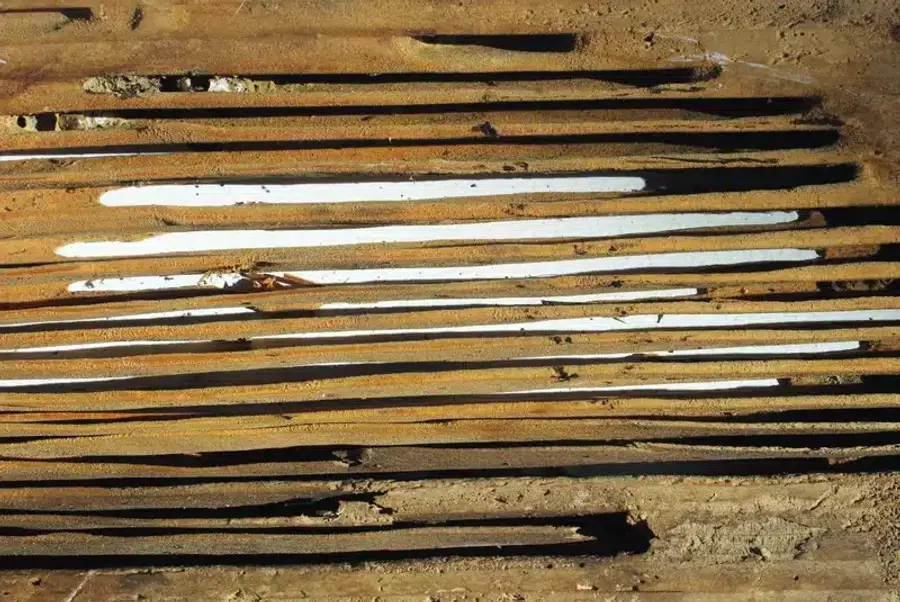

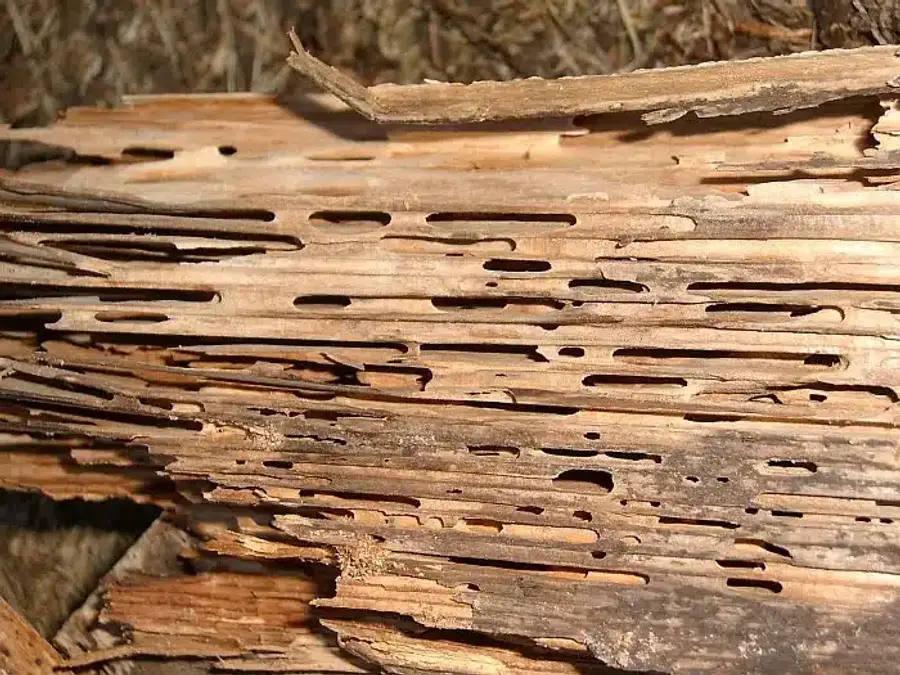

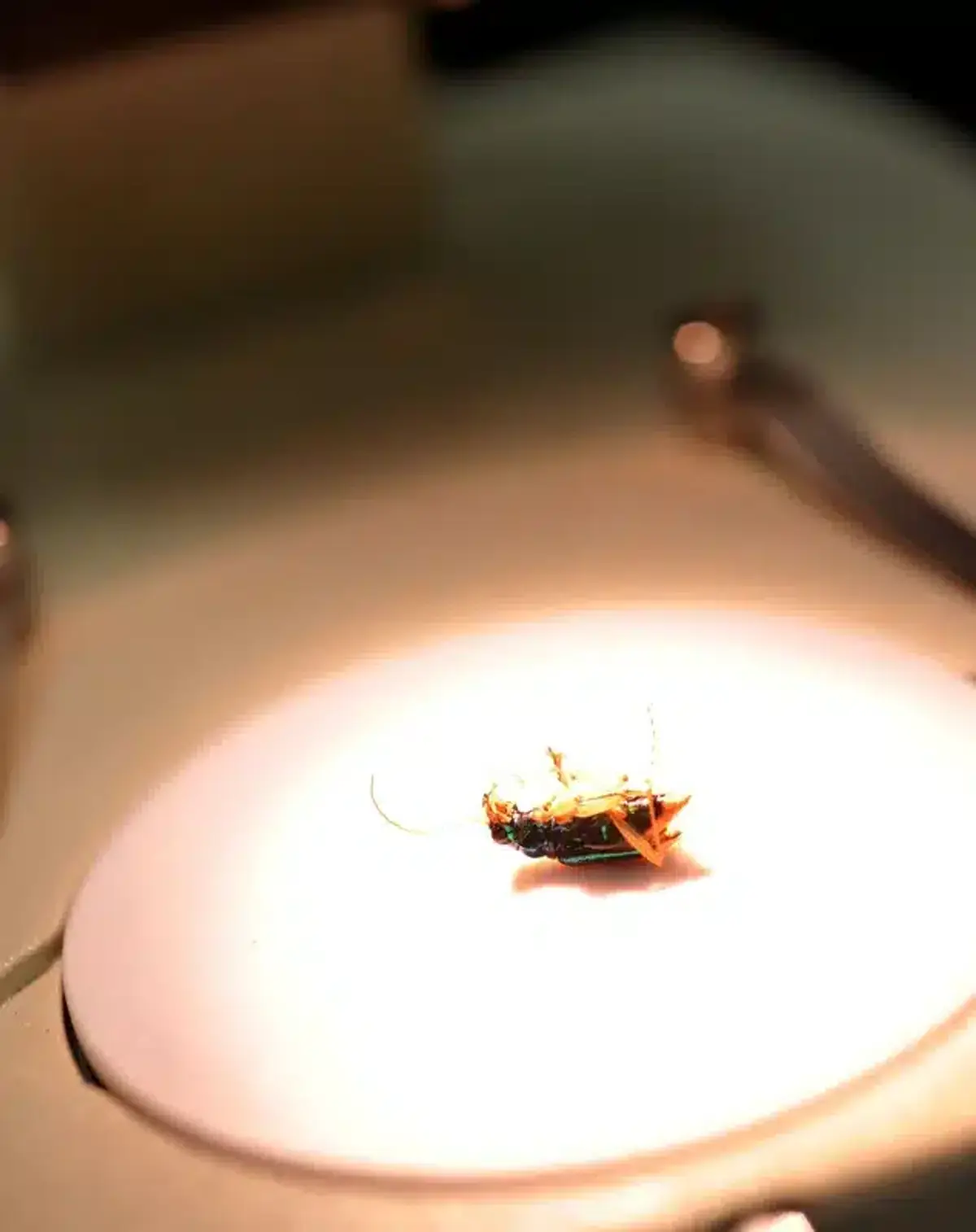
Professional-grade foams work well for treating wall voids where black ants with wings colonies might be located. The foam expands to reach areas that liquid treatments can’t penetrate effectively.
Baiting Strategies
When nests remain hidden, baiting allows the ants to carry treatment back to their colonies. According to NC State Extension, effective baits contain slow-acting ingredients like hydramethylnon, abamectin, or low-concentration boric acid.
Offer both protein-based and sweet baits, as black ants with wings colonies prefer different food sources throughout their development cycle. Place baits out of reach of pets and children, and maintain fresh bait until activity stops - typically 2-4 weeks.
Exterior Barrier Treatments
For persistent black ants with wings problems, exterior barriers provide long-term protection. Non-repellent termiticides like fipronil or imidacloprid applied around your foundation create invisible barriers that ants carry back to their colonies.
These treatments work best as follow-up to moisture remediation and baiting. They shouldn’t replace proper moisture control but rather complement a comprehensive treatment approach.
Professional Solutions for Black Ants With Wings
Dealing with black ants with wings often requires expertise that goes beyond DIY methods. Our approach starts with understanding exactly what you’re facing through detailed inspection and identification.
When you call, you’ll speak directly with a licensed technician - no phone trees or overseas operators. We provide detailed quotes and treatment plans based on your specific situation and the species involved.
Our 78-point inspection covers everything from entry points to moisture issues. We identify both active problems and potential trouble spots that could lead to future black ants with wings swarms. This comprehensive approach helps prevent recurring infestations.
For treatment, we use products that have passed through our internal research team. We’ve eliminated 9 harsh chemicals common in our industry, choosing alternatives like Essentria, Alpine, and Borate-based solutions. These products are EPA approved and ones we’d feel comfortable using in our own homes.
Our seasonal protection plan creates ongoing defense against black ants with wings and other pests. Each visit targets species most active during that particular season. Plus, if you spot problems between scheduled visits, we’ll return at no extra cost.
Follow-Up and Monitoring to Prevent Return
Successful black ants with wings control requires ongoing monitoring, especially during peak swarm seasons. Spring inspections should focus on areas where you previously found frass or swarmers, as these locations often see repeat activity.
Keep logs of moisture issues around your home. Note when gutters overflow, where condensation occurs, and any plumbing problems. These records help identify patterns that might attract future colonies.
Most treatments for black ants with wings have maximum effectiveness periods of around 90 days. Tri-annual maintenance (three times per year) ensures continuous protection as active ingredients break down over time. This regular schedule also allows for early detection of new ant activity.
Monitor landscape changes that might affect ant activity. New mulch, irrigation systems, or tree removal can shift ant populations toward or away from your home. Understanding these dynamics helps predict where problems might develop.
Preventing Future Infestations
Long-term prevention of black ants with wings requires addressing root causes rather than just treating symptoms. According to Virginia Tech Extension, moisture control represents about 80% of the solution for carpenter ant problems.
Key Prevention Strategies
Moisture Control: Fix leaks, improve ventilation in crawl spaces and attics, use bathroom exhaust fans, and dehumidify basements to reduce humidity that attracts colonies.
Landscape Management: Slope soil away from your foundation, replace wood mulch with moisture-resistant alternatives, and relocate compost bins and wood piles away from your home.
Regular Maintenance: Conduct annual inspections of vulnerable areas, repair leaks promptly, and consistently seal new cracks to maintain barriers that keep ants outside.
Focus on areas where your home creates its own moisture issues. Bathroom exhaust fans, proper attic ventilation, and basement dehumidification all reduce the humidity that attracts black ants with wings colonies.
Landscape management also plays a crucial role. Slope soil away from your foundation to direct water elsewhere. Replace wood mulch with alternatives that don’t retain moisture next to your house. Consider relocating compost bins and wood piles further from your home.
Regular maintenance prevents small problems from becoming major infestations. Annual inspections of vulnerable areas, prompt leak repairs, and consistent sealing of new cracks maintain the barriers that keep black ants with wings outside where they belong. For comprehensive prevention strategies, review our guide on keeping ants away.
Regional Considerations for Virginia, Maryland and DC
Homes in our region face unique challenges with black ants with wings due to local conditions. Many properties built near mature hardwood forests have higher carpenter ant risks, as these are their natural habitat.
The Mid-Atlantic’s humid summers combined with freeze-thaw roof damage create chronic moisture problems. This combination provides ideal conditions for the wood softening that initially attracts carpenter ant colonies.
Local soil conditions also matter. Areas like Chantilly see particular problems because the dark red soil retains moisture next to foundation walls. This creates the humid microenvironment that black ants with wings seek for colony establishment.
Understanding these regional patterns helps predict when and where problems might develop. For location-specific insights, check our coverage of common ants in Alexandria and ant types in the DC Metro area.
Conclusion
Black ants with wings serve as an early warning system for more serious ant problems developing in or around your home. The key to successful control lies in quick identification, comprehensive treatment, and addressing the underlying conditions that attracted them initially.
Remember that effective treatment takes time - baiting strategies typically require 2-4 weeks to show full results. However, this patience pays off with more complete colony elimination compared to quick-fix sprays that often make problems worse.
Most importantly, don’t ignore the moisture issues that brought black ants with wings to your home in the first place. Without fixing leaks, improving ventilation, and maintaining proper drainage, you’re likely to face recurring swarms regardless of how well you treat the current infestation.
Frequently Asked Questions
What causes black ants with wings to swarm inside homes?
+
**Black ants with wings** appear during nuptial flights when mature colonies release reproductive ants to establish new nests. These swarms happen on warm, humid afternoons after rainfall, typically between April and July in our region. Indoor swarms usually indicate an established colony somewhere within or very close to your home's structure.
Do black flying ants damage wood like termites?
+
Carpenter ants excavate galleries in wood for nesting space but don't actually eat it like termites do. However, their tunneling can weaken structural elements over time, especially in joists, sill plates, and window headers. [According to University of California IPM](https://ipm.ucanr.edu/PMG/PESTNOTES/pn7416.html), large colonies may take years to mature but can cause significant structural damage once established.
How can I kill black ants with wings in my house?
+
The most effective approach combines baiting with moisture control. Use protein and sugar-based baits containing slow-acting ingredients like hydramethylnon or abamectin. Place baits away from children and pets, maintaining fresh bait for 2-4 weeks until activity stops. Avoid repellent sprays around bait stations as these prevent ants from carrying treatment back to their colonies.
When is the best time to treat a winged ant infestation?
+
Start treatment immediately after discovering **black ants with wings**, but prepare for a 2-4 week process. Pre-swarm prevention works best - treat in early spring before peak swarming season. However, post-swarm treatment can still be effective since it targets the mature colonies that produced the winged reproductives.
How do I keep black ants with wings from returning?
+
Focus on moisture control and entry point sealing. Fix all leaks, improve ventilation in crawl spaces and attics, and ensure proper drainage away from your foundation. Seal cracks around utilities, gaps under siding, and foundation openings. Remove wood-to-soil contact and prune vegetation away from your house to eliminate ant highways.
Are black ants with wings dangerous to humans or pets?
+
**Black ants with wings** themselves pose minimal risk, but carpenter ants can bite and spray formic acid when threatened. This creates a painful burning sensation but isn't medically dangerous for most people. These ants don't carry diseases or inject venom. The main concerns are structural damage from established colonies and food contamination from nuisance species.
With five years of hands-on experience in the pest control industry, George Schulz is a registered technician with the Virginia Pest Management Association and a proud third-generation professional in a family business that's been protecting homes for over 57 years. He manages and trains a team of service pros while also leading internal research efforts—recently spearheading a deep-dive review of thousands of documents on pest control materials to hand-pick the most kid and pet friendly, most effective solutions tailored specifically for homes in the DC metro area.
